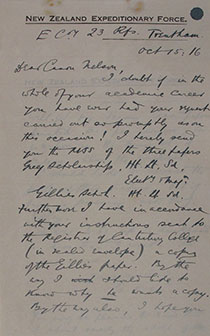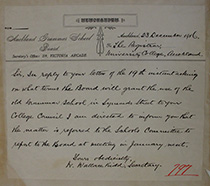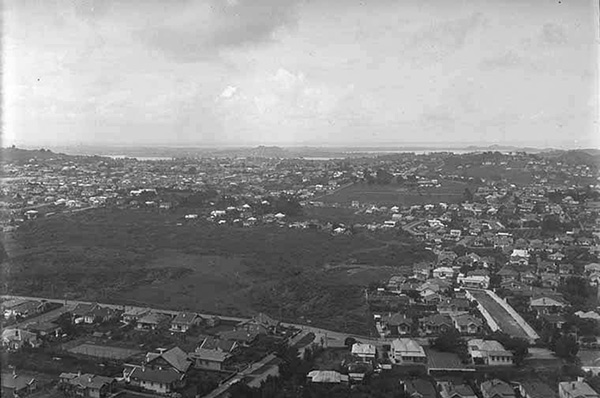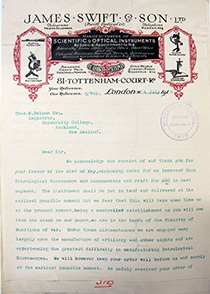
Letter from James Swift & Sons, London, about AUC’s order for a new microscope.General Correspondence – 1916. University of Auckland Administrative Archives.
At the neighbouring Auckland Training College (ATC), Herbert Cousins took over as Principal from Herbert Milnes, who enlisted in March 1916. The remaining staff were promoted and an ex-student was appointed to fill the vacancy at the bottom of the hierarchy. This arrangement apparently proved most satisfactory and ensured `a continuity of aims and methods both in the school and in the College.'
At both AUC and ATC, the war continued to affect the size and composition of the student body. At ATC, student numbers were actually higher than in previous years with a record 119 students enrolling in the first term, comprising 88 women and 31 men, of whom just nine were second year students. Cousins noted that the large number of women students was placing a strain upon facilities at ATC which had been built to accommodate a total of 80 students, which the women alone exceeded. In comparison, enrolments at AUC for 1916 were almost the same as 1915 at 536 students. In contrast to ATC, this number comprised 337 men and just 199 women, almost 100 fewer women than in 1914 when 283 women were enrolled and made up 45 percent of the student body. It is not clear why there was such a drop in the number of women studying at AUC during the war but the trend was not repeated at the other University Colleges.
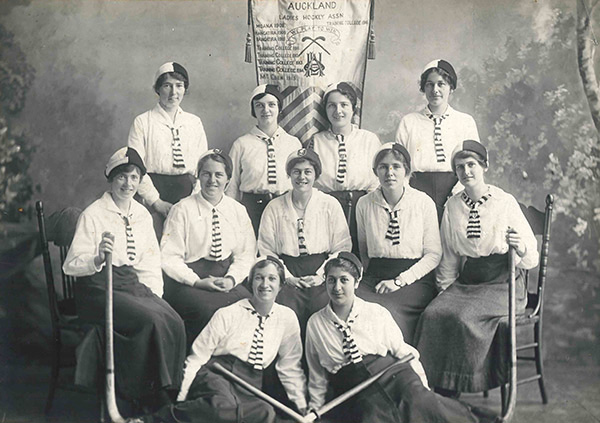 ATC senior ladies hockey team 1916, winners of the Auckland Ladies Hockey Association championship. Faculty of Education Archives.
ATC senior ladies hockey team 1916, winners of the Auckland Ladies Hockey Association championship. Faculty of Education Archives.
Despite the postponement of some traditional campus events, such as the graduation carnival, there were still plenty of exciting activities for students to participate in, including `a scientific exhibition of the most instructive and interesting experiments in all branches of science.’ Sport continued to be an important aspect of student life at both institutions. At ATC, the senior ladies hockey team won the Auckland Ladies Hockey Association’s banner in the championship competition. At AUC, members of the Rifle Club retained the Haslam Shield for another year and the Football Club won the Auckland Senior Championship. The Rifle Club also organised a very successful ladies’ competition while members of the Ladies’ Common Room took up knitting, an activity which they reported ‘threatened the popularity of lectures.’
The report submitted by the Men’s Common Room executive was less enthusiastic. As a result of increasing food prices due to wartime shortages, they had to ask the Students’ Association for assistance to pay their bills. Wartime shortages were also affecting the College’s ability to procure new equipment. In July, London-based company James Swift & Sons, manufacturers of scientific and optical instruments, apologised for not being able to fill AUC’s order for an ‘Improved Dick Petrological Microscope’, noting that as a controlled establishment, they were `engaged largely upon the manufacture of artillery and other sights.’




